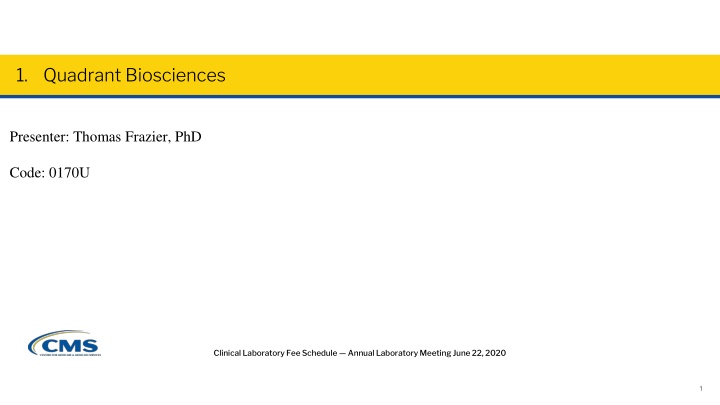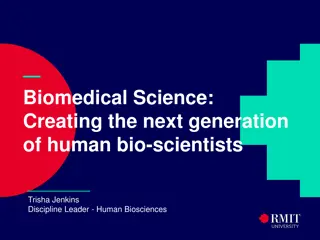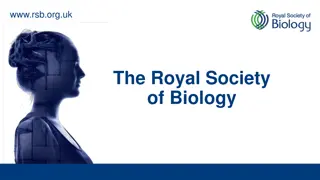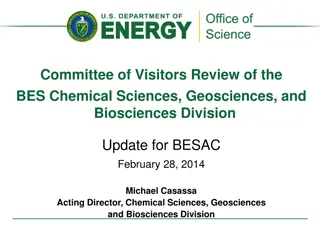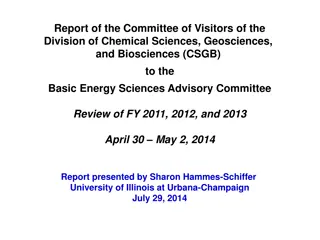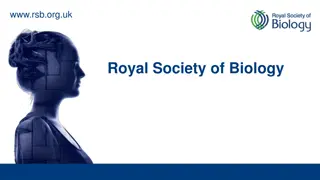1. Quadrant Biosciences
Delays in autism diagnosis can hinder early intervention, leading to missed opportunities for effective treatment. Early diagnosis is crucial in improving outcomes for children with autism, as highlighted by research and studies on the benefits of early intensive interventions. The financial impact of delayed diagnosis is also significant, with higher medical costs associated with autism. Timely and accurate diagnosis followed by appropriate interventions can help reduce healthcare expenses, improve outcomes, and ultimately enhance quality of life for individuals with autism spectrum disorder.
Download Presentation

Please find below an Image/Link to download the presentation.
The content on the website is provided AS IS for your information and personal use only. It may not be sold, licensed, or shared on other websites without obtaining consent from the author.If you encounter any issues during the download, it is possible that the publisher has removed the file from their server.
You are allowed to download the files provided on this website for personal or commercial use, subject to the condition that they are used lawfully. All files are the property of their respective owners.
The content on the website is provided AS IS for your information and personal use only. It may not be sold, licensed, or shared on other websites without obtaining consent from the author.
E N D
Presentation Transcript
1. Quadrant Biosciences Presenter: Thomas Frazier, PhD Code: 0170U Clinical Laboratory Fee Schedule Annual Laboratory Meeting June 22, 2020 1
0170U: Neurology (autism spectrum disorder [ASD]), RNA, next- generation sequencing, saliva, algorithmic analysis, and results reported as predictive probability of ASD diagnosis Public comment Rationale Crosswalk to 0090U Code 0170U was sought to describe a new molecular diagnostic procedure for ASD. We recommend crosswalk to 0090U due to similar procedural requirements and resource utilization between 0170U and 0090U. CMS Annual Lab Meeting, June 22, 2020 Quadrant Biosciences Frazier, Thomas 2
Challenges in diagnosing autism cause delays in intervention The current autism spectrum disorder (ASD) diagnostic process causes large proportions of children with ASD to experience a delay in diagnosis and miss an opportunity to initiate treatment at an early age. Diagnoses are being delayed An average wait time of 3 years1between first concerns to receiving a diagnosis cause a delay in initiation of interventions at an early age when evidence-based interventions are proven most effective. 3 YEARS 4 YEARS 0 3 YEARS to Average age of diagnosis in the U.S. is four years old2. Earlier diagnosis allows access to early intervention leading to better outcomes average wait time average age at diagnosis most critical period in child s life The first three years of life are a critical period for initiating ASD intervention. Randomized controlled trials show that children with ASD who are treated before age 3 achieve substantial cognitive and functional gains and symptom improvement3,4. 1. 2. 3. 4. Oswald, Donald P., et al. "Parental report of the diagnostic process and outcome: ASD compared with other developmental disabilities." Focus on Autism and Other Developmental Disabilities 32.2 (2017): 152-160. Centers for Disease Control and Prevention. Spotlight On: Delay Between First Concern to Accessing Services. (2019). Retrieved from https://www.cdc.gov/ncbddd/autism/addm-community-report/delay-to-accessingservices.html Peters-Scheffer, Nienke, et al. "A meta-analytic study on the effectiveness of comprehensive ABA-based early intervention programs for children with autism spectrum disorders." Research in Autism Spectrum Disorders5.1 (2011): 60-69. Howlin, Patricia, Iliana Magiati, and Tony Charman. "Systematic review of early intensive behavioral interventions for children with autism." American journal on intellectual and developmental disabilities 114.1 (2009): 23-41. Quadrant Biosciences, Thomas Frazier, PhD 3
Medical costs for children with autism are significantly higher ASD MEAN NON-ASD MEAN FOLD INCREASE Children with ASD utilize more healthcare services than children without ASD Inpatient visits 0.3 0.1 3.0 Outpatient visits total* 10.7 3.7 2.9 Studies show that children with ASD may incur average annual medical costs ranging from $3,000 to $22,000 per child1 Hospital 0.3 0.1 3.0 Physician* 5.2 1.8 2.8 Nonphysician office* 3.1 0.7 4.4 In one study, medical expenditures for children with ASD were an average of 4.1 to 6.2 times higher than for those without ASD2 Emergency department 0.1 0.2 -0.5 Home health care visits 11.6 0.3 38.7 Early accurate diagnosis followed by early intensive intervention has the potential to significantly decrease costs related to medical care Dental care 1.2 1.1 1.1 Prescription medication with refills* 11.4 2.6 4.4 Savings related to intervention are estimated up to $1.1 millionin social services, housing, vocational support services, and healthcare costs per person3 *P<0.05. Includes chiropractors, midwives, nurses and nurse practitioners, optometrists, podiatrists, physician assistants, physical therapists, occupational therapists, psychologists, social workers, technicians, and receptionists / clerks / secretaries. Includes agency and non agency home health care. 1. 2. 3. Lavelle, Tara A., et al. "Economic burden of childhood autism spectrum disorders." Pediatrics 133.3 (2014): e520-e529. Shimabukuro, Tom T., Scott D. Grosse, and Catherine Rice. "Medical expenditures for children with an autism spectrum disorder in a privately insured population." Journal of autism and developmental disorders38.3 (2008): 546-552. Jacobson, John W., James A. Mulick, and Gina Green. "Cost benefit estimates for early intensive behavioral intervention for young children with autism general model and single state case." Behavioral Interventions: Theory & Practice in Residential & Community Based Clinical Programs13.4 (1998): 201-226. Quadrant Biosciences, Thomas Frazier, PhD 4
First validated epigenetic test predicting autism Clarifi identifies and quantifies abundance levels of non-coding RNA (e.g, microRNA, piRNA, snoRNA) and microbial taxa identified by RNA. DNA RNA specific instructions database of instructions Why epigenetics in autism? Protein functional product Epigenetic mechanisms have been implicated in the pathophysiology of ASD1. Epigenetic molecules, such as non-coding RNA, influence gene expression in response to environmental or other factors without changing the underlying DNA sequence2. Salivary RNA measurement represents a novel, non-invasive approach to accurately identify children with ASD3. Non-coding RNA regulators 1. 2. 3. Wu, Ye E., et al. "Genome-wide, integrative analysis implicates microRNA dysregulation in autism spectrum disorder." Nature neuroscience19.11 (2016): 1463. Loke, Yuk Jing, Anthony John Hannan, and Jeffrey Mark Craig. "The role of epigenetic change in autism spectrum disorders." Frontiers in neurology6 (2015): 107. Vargason, Troy, et al. "Towards a Multivariate Biomarker-based Diagnosis of Autism Spectrum Disorder: Review and Discussion of Recent Advancements." Seminars in Pediatric Neurology. WB Saunders, 2020. Quadrant Biosciences, Thomas Frazier, PhD 5
A diagnostic aid for early identification Clarifi process Clarifi ASD test development Saliva-based test 18 months Well-child visit with Clarifi 18 to 24 months Initiate services Intended to be used with children when there is a suspicion of autism (e.g. positive screening results) as early as 18 months 2+ more years of intervention CLIA-approved laboratory developed test Versus the current diagnostic process Clinical research conducted at SUNY Upstate Medical University and Penn State College of Medicine 18 months Well-child visit screening tool 24 months to 3 years Referral and wait time for evaluation 3 to 4 years Diagnostic evaluation 24 months Well-child visit screening tool 4 to 5 years Initiate services 1. 2. 3. 4. 5. 6. 7. Hicks, Steven D., et al. "Validation of a salivary RNA test for childhood autism spectrum disorder." Frontiers in genetics 9 (2018): 534. Hicks, Steven D., et al. "Saliva microRNA differentiates children with autism from peers with typical and atypical development."Journal of the American Academy of Child & Adolescent Psychiatry 59.2 (2020): 296-308. Hicks, Steven D., et al. "Diurnal oscillations in human salivary microRNA and microbial transcription: Implications for human health and disease." PloS one 13.7 (2018). Wagner, Kayla E., et al. "Parent Perspectives Towards Genetic and Epigenetic Testing for Autism Spectrum Disorder." Journal of autism and developmental disorders (2019): 1-12. Hicks, Steven D., et al. "Oral microbiome activity in children with autism spectrum disorder." Autism Research 11.9 (2018): 1286-1299. Hicks, Steven D., et al. "Salivary miRNA profiles identify children with autism spectrum disorder, correlate with adaptive behavior, and implicate ASD candidate genes involved in neurodevelopment." BMC pediatrics 16.1 (2016): 52. Hicks, Steven D., and Frank A. Middleton. "A comparative review of microRNA expression patterns in autism spectrum disorder." Frontiers in psychiatry 7 (2016): 176. Quadrant Biosciences, Thomas Frazier, PhD 6
Clarifi method and workflow Positive screen prompts molecular testing Stabilization and extraction Alignment and proprietary algorithm Upon receipt, samples are incubated to stabilize the RNA and RNA is extracted Sequence files are aligned to mature and precursor microRNA, piRNA, and the microbiome Patient screens positive on autism screening tool (e.g., MCHAT-R-F parent questionnaire) Probability used as a diagnostic aid These features, along with selected demographic data are passed through a proprietary algorithm, which applies a machine learning model to produce a probability Health care provider administers the Clarifi diagnostic aid Next generation sequencing Results provided as probability index (0 to 100%) of the patient s likelihood for a resulting ASD diagnosis RNA sequencing is performed using next generation sequencing Sequencing outputs FASTQ files or digital records of each detected RNA sequence Quadrant Biosciences, Thomas Frazier, PhD 7
Crosswalk assessment and code candidate 188 TIER 1 Tier 1 Potential Crosswalk Candidates among GSP (19), MAAA (38), and PLA (131) Code Sets 119 TIER 2 Tier 5 Compared resources with codes: 0090U $1,950 and 0018U $3,002 39 TIER 3 Tier 2 Codes Involving Genetic Analysis (excludes non-genetic MAAAs/PLAs) Tier 3 Codes Including Algorithmic-based Output 24 TIER 4 Proposed code 0090U Tier 4 Codes using mRNA gene expression profiling with rates on CLFS 2 TIER 5 Quadrant Biosciences, Thomas Frazier, PhD 8
Clarifi resources assessment YEARLY FORECAST # OF SAMPLES 20000 DNA Extraction $3.56 Total Pre-Analytics/Analytics Labor Cost Library Prep $15.01 Sequencing $2.68 DNA Extraction $9.85 Clarifi uses an NGS platform with a 32-gene microRNA target assay. Library Prep $477.13 Total Pre-Analytics/Analytics Consumables Cost Sequencing $622.48 Costs using the Association for Molecular Pathology (AMP) micro-cost analysis tool for Genomic Sequencing Procedures were evaluated. DNA Extraction $4.13 Library Prep $4.48 Total Pre-Analytics/Analytics Equipment Cost 0090U is the best fit based on a combination of technology and resources. Sequencing $128.04 Total Bioinformatics / Data Analysis / Reporting Cost $434.25 Total Maintenance Overhead Cost $39.61 Total Assay Cost (Per Sample) $2,020.71 Quadrant Biosciences, Thomas Frazier, PhD 9
Relevance for Medicare and Medicaid Thus, CMS must consider Medicaid program impact as it historically has: Autism Spectrum Disorder Lower prevalence/impact condition in the Medicare population, but highly prevalent in the Medicaid program wherein CMS mandates that all children must receive Early Periodic Screening Diagnosis and Treatment (EPSDT) services to identify health and developmental issues, including ASD, as early as possible. Excerpted from Program Memorandum, Transmittal AB-00- 109, Change Request 1377 Dated Nov 29, 2000: Fetal fibronectin, cervicovaginal secretions, semi-quantitative (code 82731) is a test used to aid in treating obstetric patients to assess the risk of preterm delivery. Medicare seldom receives claims for this test; however, Medicaid State Agencies should note a year 2001 price adjustment to the Medicare national limitation amount for the code because the amount establishes an upper limit on the Medicaid payment amount. Clearly the Medicare upper bound on Medicaid clinical diagnostic laboratory test payments is an important, relevant concern for patient access. 1. Centers for Medicare & Medicaid Services. Clarification of Medicaid Coverage of Services to Children with Autism. (2014). Retrieved from https://www.medicaid.gov/Federal-Policy-Guidance/Downloads/CIB-07-07-14.pdf Quadrant Biosciences, Thomas Frazier, PhD 10
0170U: Neurology (autism spectrum disorder [ASD]), RNA, next- generation sequencing, saliva, algorithmic analysis, and results reported as predictive probability of ASD diagnosis Public comment Rationale Crosswalk to 0090U Code 0170U was sought to describe a new molecular diagnostic procedure for ASD. We recommend crosswalk to 0090U due to similar procedural requirements and resource utilization between 0170U and 0090U. CMS Annual Lab Meeting, June 22, 2020 Quadrant Biosciences Frazier, Thomas 11
